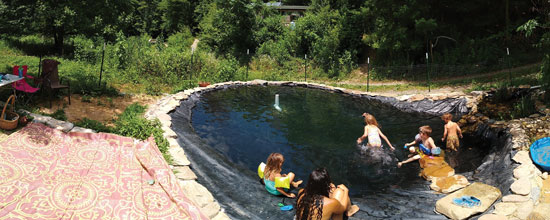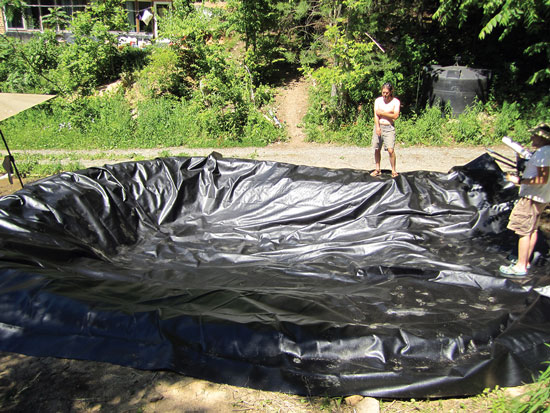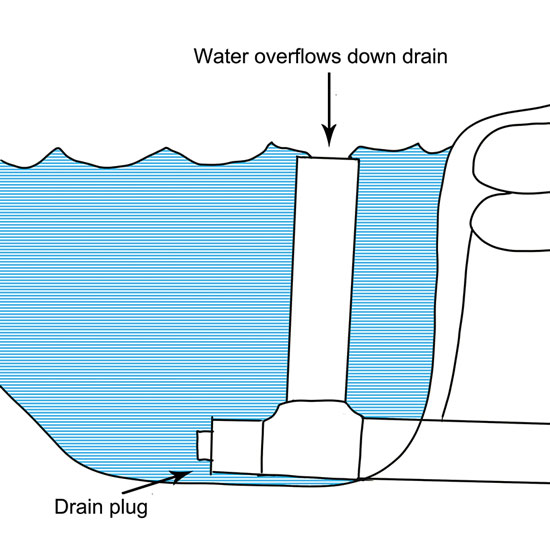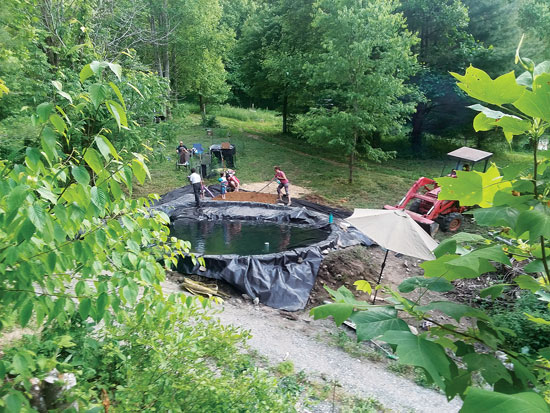For years Morgan Caraway had an ambition to build a pool below the natural spring on his property. He knew that filling the pool would be easy, because gravity would move the water. His dream finally came true in 2018, and here are the steps he and his wife, Mary Jane, took to build their spring-fed pool.
Morgan learned that gradual curves can become slipping points when algae grows on the pond liner and that terraces are more practical and allow for clearly demarcated depths for swimmers. He bought a long piece of 4-inch PVC for a drainage pipe, and, knowing he’d need to drain the pool occasionally, he also bought a tee and a clean-out plug. They planned to place the drainage pipe at the lowest point of the excavation to make the pool easy to drain when it needed to be cleaned. Mary Jane learned that a bog with aquatic plants might cut down on the algae, so they decided to build one out of rocks and cement-stabilized earth. Most of the pool footprint could be created by excavation, and they hired somebody with a backhoe attachment on his tractor to dig it. 
They held a combination workshop and workday for students and friends, and divided them into two groups. One group filled the bags, and the other placed them. Although the excavation had created most of the pool shape, they still had to build up height with three rows of earthbags in some areas. For extra support against the weight of the water within, they hammered short lengths of 1⁄2-inch rebar through the earthbag wall, making sure not to leave any metal above the tops of the bags. Around the big curve, they added 2-foot lengths of rebar every 2 to 3 feet. Note that backfilling against a wall will also make it resist pressure from the water side.
They needed a liner for their pool, as the soil is porous. After making sure there were no sharp rocks sticking up inside the excavated area, they placed the liner, choosing HDRPE (high-density reinforced polyethylene) liner because it’s less expensive and lasts longer than EPDM, and resists rips and tears. Such liners are generally guaranteed for 40 years. Order extra feet all around to make sure the liner is big enough for your planned pond. They pushed down the liner as far as it would go, and then delicately and precisely cut the hole for it to slip over the drainage pipe. 
Then they assembled the rest of the drain and the overflow pipe. The height of the overflow pipe will establish the depth of the water in your pond, because the water will flow out of the pipe when it reaches the lip. They covered the outer edge of the membrane with rocks for extra protection and beautification.
The pool has performed swimmingly, and has become a community center during our scorching hot and humid summers. Usually they have to clean the pool weekly at the peak of summer to prevent excessive algae growth.  The most expensive part of their natural pool was the $550 liner. They also paid about $300 for the excavation, and a small amount for inexpensive PVC pipe, so the total cost was about $900.
The most expensive part of their natural pool was the $550 liner. They also paid about $300 for the excavation, and a small amount for inexpensive PVC pipe, so the total cost was about $900.
Earthbags can be a cost-effective way to build a pool, and they’re much stronger than the average above ground pool. If you properly protect the earthbags from sun, they can last indefinitely in almost any environment.
Morgan Caraway and his wife, Mary Jane, live off-grid and conduct natural building classes and sustainable living workshops both in person and online, including “Building an Earthbag Tiny House,” at Sustainable Life School. All photos are courtesy of Morgan Caraway.
You can read the original article at www.motherearthnews.com

Love the buttresses.
Good work and may you enjoy your swims for many years.